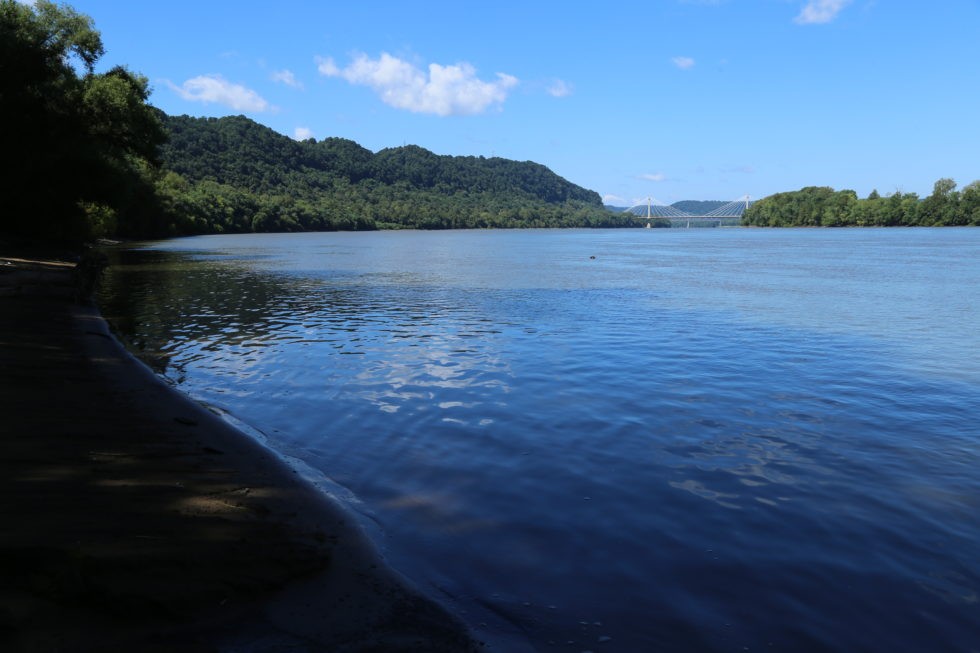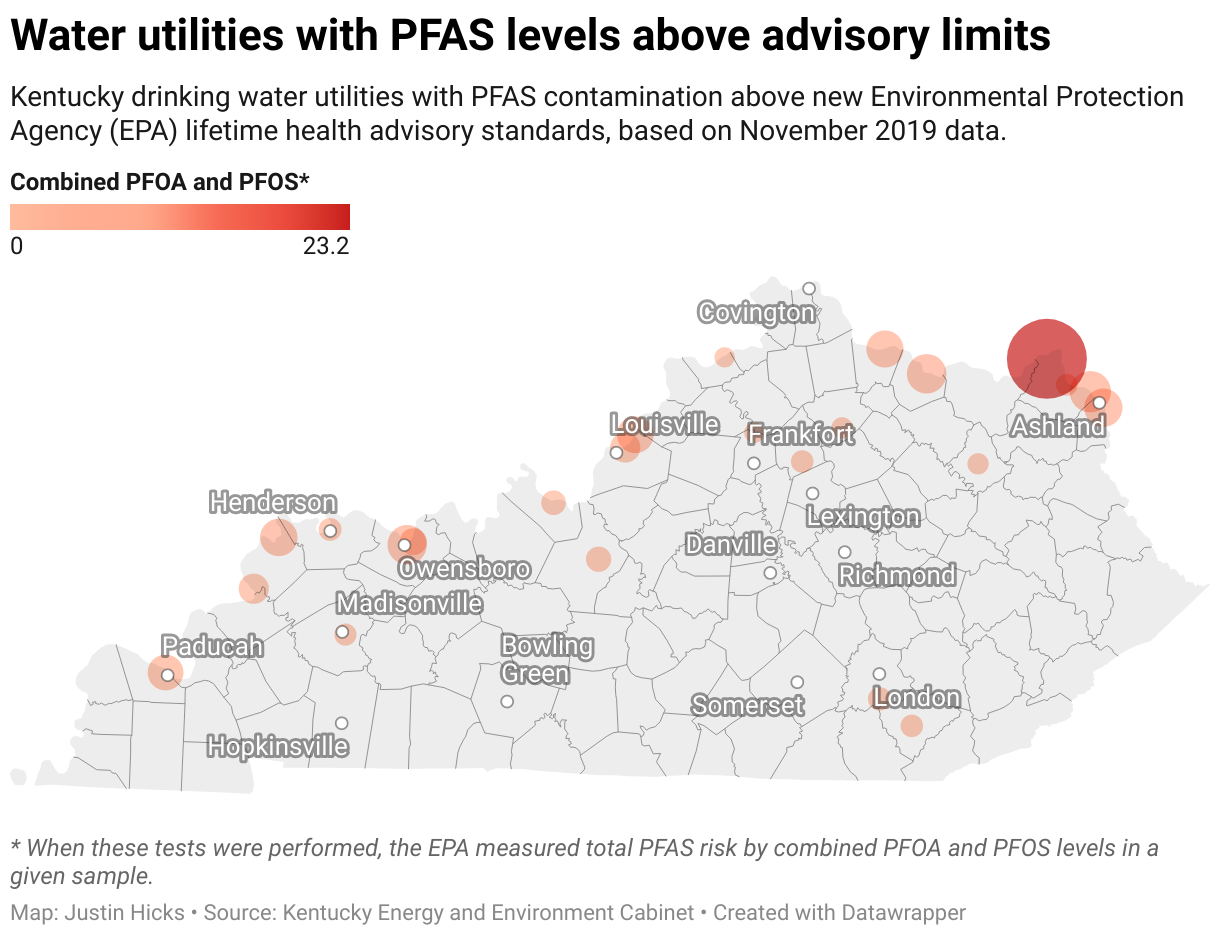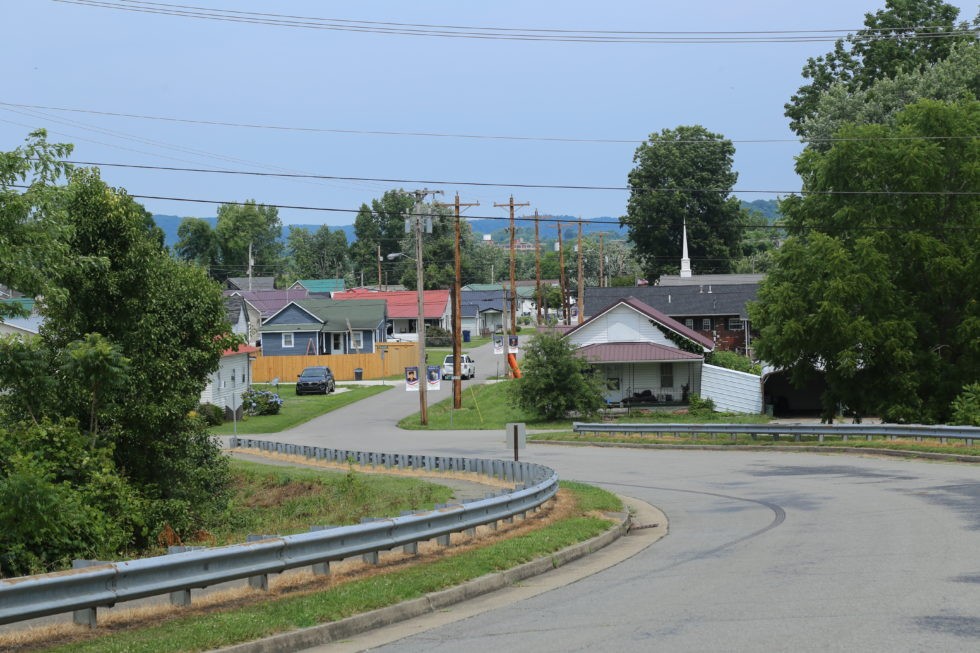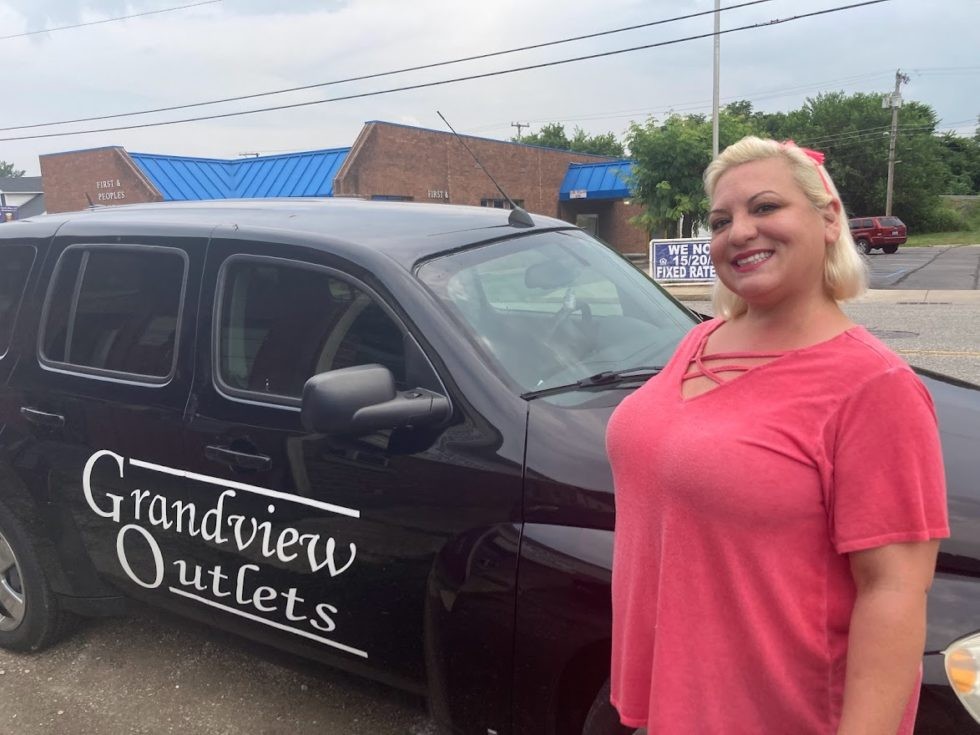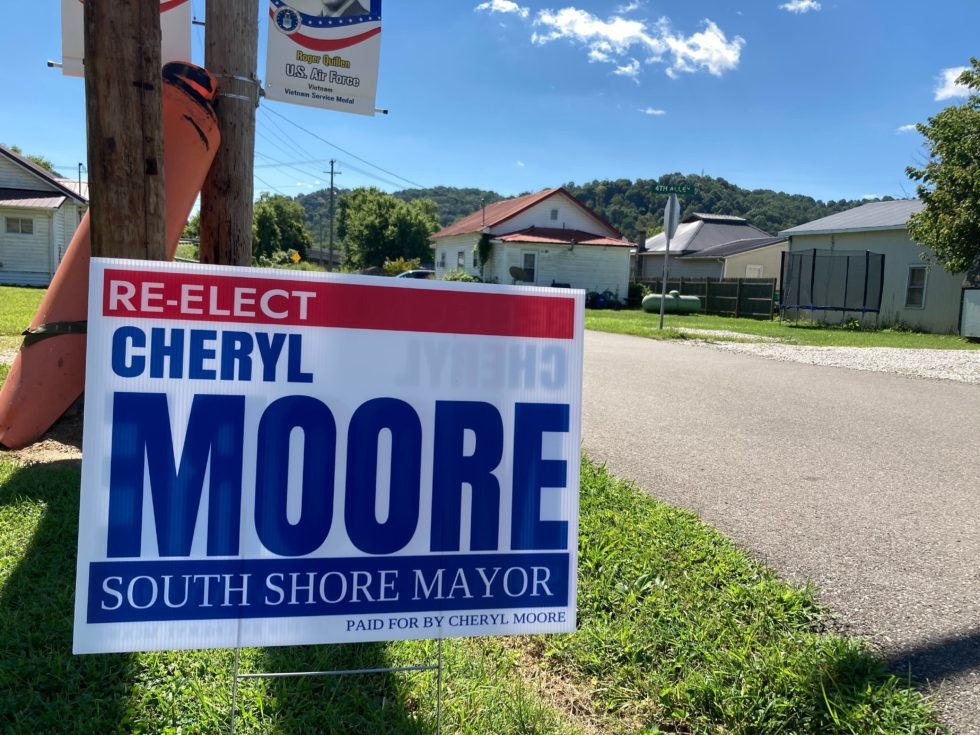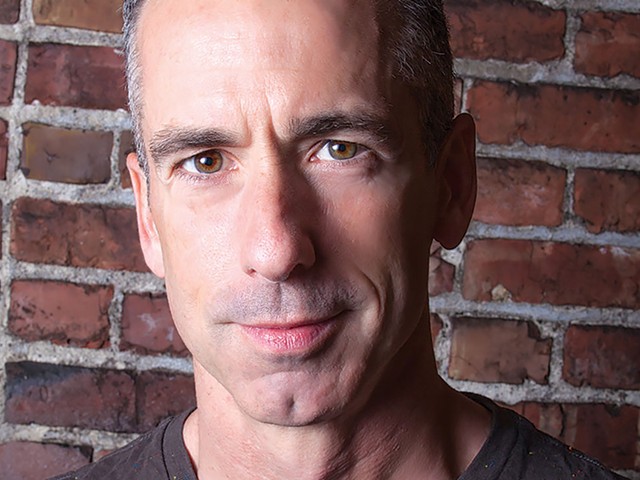This story was produced by the Kentucky Center for Investigative Reporting, a nonprofit newsroom by Louisville Public Media. For more, visit KyCIR.org.
Nearly three years ago, state officials found toxic “forever chemicals” polluting the drinking water in the city of South Shore at higher concentrations than anywhere else in Kentucky.
The state’s Energy and Environment Cabinet warned South Shore Mayor Cheryl Moore and began regularly testing the city’s water and sending her the results.
Life has otherwise gone on much as usual in the small city of about a thousand people, which skirts the banks of the Ohio River northwest of Ashland. Hungry motorists pull off the main highway and walk up to the window at EJ’s Dairy Bar for hot dogs, hamburgers, sodas and slushies.
The ice and water for the soda fountain come from the city’s tap, but no one from the city or state ever stopped by to warn the business about the contaminated drinking water, according to EJ’s manager Eric Feeman, whose parents own the restaurant.
“I honestly have not heard a thing about it; this is the first thing that has been brought up at all,” Feeman told a WFPL News reporter in late August. “I think it would have been a good idea to do that. I think they probably should have been transparent with the people.”
Feeman wasn’t the only one left in the dark.
An investigation from WFPL News and The Kentucky Center for Investigative Reporting found evidence South Shore officials failed to tell residents about the pollution in their drinking water, omitting key details in an emergency water declaration. The city did not have any records of public notices sent to residents. City officials did not answer questions or return emails and phone calls answering whether they had ever informed residents.
The mayor and a city commissioner hung up on a reporter when contacted. And in interviews with more than a dozen residents, none had heard of the contamination.
The questions raised about transparency aren’t unique to South Shore. In the western Kentucky community of Henderson, state and local officials didn’t inform the public about widespread pollution from a Teflon recycler until WFPL News and APM Reports broke a series of stories last year.
The problems in South Shore highlight how — even when the potential harm caused by these chemicals is well-understood and the pollution is well-documented — public officials had no legal responsibility to inform their constituents about the forever chemicals in their drinking water. As a result, residents didn’t have the information they needed to make informed decisions about contaminated drinking water in their community years after the pollution was discovered.
Forever chemicals, also known as per- and poly-fluoroalkyl substances, or PFAS, describe a family of thousands of compounds used in everyday products: food wrappers, non-stick pans, firefighting foam, carpeting, clothing and cosmetics. They’ve received the moniker “forever chemicals” because their bonds are among the strongest in nature and persist in the environment for a very long time.
The U.S. Environmental Protection Agency says exposure increases the risk of various cancers and organ damage. Exposure can also suppress the immune system and interfere with the body’s natural hormones. A 2012 medical study of nearly 70,000 people in Parkersburg, West Virginia, found exposure to one PFAS chemical likely contributed to birth defects, cancer, ulcerative colitis, thyroid, liver and kidney disease and high cholesterol.
The EPA issues health advisories that calculate the level of PFAS exposure people can have in their drinking water over their lifetime before suffering adverse health effects. The agency encourages communities and water systems with contamination levels higher than that to inform users and to consider ways to lower PFAS levels by treating their water or finding new uncontaminated water sources.
But the advisories are not legally enforceable. No state or federal laws regulate the chemicals in Kentucky. Communities and utilities are not required to do anything about the forever chemicals in their drinking water, and there are no clear consequences for failing to inform residents about PFAS.
When Moore, who is currently running for reelection, declared a water emergency in January, the measure she signed did not mention PFAS contamination. The declaration said the city’s wells had “diminished” so much that the city’s water source was “not sufficient,” giving the impression the city’s wells were running dry without providing any reason why.
But in June, Moore authorized the city to sue chemical manufacturers for producing the forever chemicals contaminating the city’s water. The complaint, filed in federal court, claims South Shore shut down the wells because of the chemicals in the drinking water, a detail that Moore omitted from her emergency declaration in January.
The declaration also authorized an emergency drinking water line to be built across a bridge over the Ohio River so that South Shore could receive water from the neighboring city of Portsmouth, Ohio. But Portsmouth discovered low levels of PFAS chemicals in its own drinking water in 2020 and has also filed a lawsuit against PFAS manufacturers.
Construction on the temporary water line finished in late June. Still, as of July, records show PFAS continued contaminating South Shore’s drinking water at levels deemed unsafe by the EPA.
Energy and Environment Cabinet spokesperson John Mura said PFAS concentrations in South Shore’s drinking water are now lower, and similar to those found in other communities that draw water from the Ohio River.
But records show that many of those communities also have drinking water with PFAS levels higher than EPA health standards.
Jamie Young, an associate professor at the University of Louisville’s Center for Integrated Environmental Health Sciences, said PFAS chemicals pose a risk to residents, and they deserve to know. Providing residents information about the risks could help them reduce their exposure, she said.
“There’s definitely a health risk,” said Young, who researches the toll pollution can have on communities. “Until we understand more and understand how to mediate this, give your customers the opportunity to make that decision for themselves.”
Drinking The Water In South Shore
South Shore’s water serves nearly 6,800 people in the city and surrounding communities, including 14 churches, three schools, two hospital outreach centers, a library and dozens of small businesses, records show.Most South Shore residents interviewed for this story said they don’t drink the water, which comes from a city-owned utility. Decades of foul smells, discoloration, boil water notices and problems ranging from high chlorine to repeated E. Coli violations had sown distrust even before the mayor declared the water emergency.
But some do drink and cook with the water, like Marissa Smith, who’s been living just a few doors down from the mayor in South Shore for the last year and a half. Smith wanted to know why no one told her about the contaminated water.
“I definitely would have been buying bottled water or a filter to correct the water if I knew it could possibly cause long-term issues," she said.
Since 2019, the Kentucky Department for Environmental Protection has been sampling water in South Shore, and the levels of PFAS chemicals were considered safe under the EPA’s federal lifetime health advisory standards, which was 70 parts per trillion for combined levels of the most -researched PFAS chemicals: PFOA and PFOS.
But the EPA significantly revised those numbers in June, dramatically lowering the standard to just .004 parts per trillion for PFOA and .02 for PFOS, “to help protect concerned families from this pervasive challenge,” EPA Administrator Michael S. Regan said.
Based on the new standards, records show PFAS levels in South Shore’s drinking water at times exceeded several thousand times the EPA’s lifetime limit advisory for PFOA and PFOS. At least a half-dozen different compounds were found.
In July, even after the city established a temporary water line from the neighboring town of Portsmouth, results still showed PFAS chemicals exceeding federal health standards, records show.
It’s unclear how long PFAS chemicals have contaminated the drinking water in South Shore and what the consequences of that exposure means for the people who live there.
Still, South Shore residents interviewed by WFPL said they would have liked to have known there were unsafe chemicals in their water. Some heard the wells were running dry, and others knew about the new emergency line, but none had been warned about the PFAS chemicals.
“Obviously, people need to be informed,” said Sarah Williamson, who runs a discount shop in town.
One of Williamson’s customers, Genny Gordan, said she wasn’t sure why the city had built an emergency line from Portsmouth to South Shore. She remembers the city’s water having problems over the years. But she doesn’t remember receiving any notice about the PFAS contamination.
“I don’t know if [the mayor] has to anyone else, but it’s never been mentioned to me,” Gordan said.
When WFPL asked South Shore officials for any public notice informing residents about PFAS contamination since 2019, the city responded with an email saying that it could not produce any such records.
The state environment cabinet first publicly shared information about the contamination in a 2019 report. Mura, the cabinet's spokesperson, said he sent a press release to more than 100 outlets, including WFPL, which covered the story. Nonetheless, South Shore residents interviewed for this story were unaware of the study.
In August 2020, a state environmental scientist recommended South Shore consider buying water rather than continuing to rely on contaminated wells, records show.
At the time, the city had a $3 million loan from the Kentucky Infrastructure Authority to build a new water treatment plant to fix the its more established water quality issues.
The PFAS contamination was so severe, however, that the Energy and Environment Cabinet would not support the construction of a new water treatment plant.
Cabinet Secretary Rebecca Goodman wrote to the KIA in November 2021, saying it would be too expensive for South Shore to treat the water for the contamination and the city “must pursue an alternate water source.”
Mayor Moore wrote her own letter to the agency that month asking to change the loan terms so South Shore could use the funds to build an emergency water line to Portsmouth. She told KIA that PFAS chemicals had been found in most of the city's wells and that they “are not producing enough water.” The agency granted her request.
WFPL asked Kentucky’s Energy and Environment Cabinet if it had information the wells were running dry. Mura replied that South Shore took several of its higher yield wells offline because of PFAS sampling at the cabinet’s recommendation.
“This left the town dependent on lower-producing wells until the community received water from Portsmouth,” Mura said.
PFAS Contamination Lawsuits Across The U.S.
From 1951 to 2003, an industry risk assessor estimated DuPont released more than 600,000 pounds of PFOA into the Ohio River outside Parkersburg, West Virginia — a little more than 100 miles north of South Shore.As recently as this summer, researchers continued to find PFOA and other kinds of PFAS chemicals throughout the Ohio River, in every major Kentucky watershed and at unsafe levels in at least 38 drinking water systems.
These chemicals aren’t the kind of thing that can be simply boiled out of water. Utilities and residents can treat drinking water for PFAS chemicals using activated carbon and reverse osmosis, but the process is expensive.
Many cities across the country are suing PFAS manufacturers to cover the costs of remediation. Bloomberg Law reports more than 6,400 PFAS-related lawsuits have been filed since 2005.
The pollution generated at the DuPont Washington Works plant outside Parkersburg resulted in a 2004 class-action lawsuit settlement valued at over $300 million and the creation of a medical monitoring program that found links between one specific type of PFAS, known as PFOA, and a half-dozen diseases, including cancer, pregnancy-induced hypertension and ulcerative colitis, records show.
The attorney who won that settlement, Rob Bilott, said these chemicals pose a worldwide public health threat. Bilott, who is a Kentucky resident, has since secured more than $1 billion for PFAS-impacted communities and is now co-counsel on the South Shore lawsuit.
“What began along the Ohio River two decades ago focused on one chemical, PFOA, that DuPont was using, we now know has spread to a whole family of these chemicals being found in water all over the country,” Bilott said during a virtual conference call on the EPA’s proposal to designate PFAS as a hazardous substance.
Bilott said he’s tried to alert Kentucky officials to the problems surrounding PFAS, but has had “limited success.”
Democratic state Rep. Nima Kulkarni of Louisville has introduced multiple bills to the Kentucky General Assembly in the past two years that proposed the Energy and Environment Cabinet establish maximum PFAS limits for drinking water and industrial discharges. But the bills weren't assigned to a committee and failed.
“PFAS is not something that’s going to be high up on anyone’s priority list simply because legislators are not aware of what it is or how it’s impacting their own communities and until we get to that point it’s not likely to get a hearing,” Kulkarni said.
While there are no state or federal rules regulating PFAS chemicals, the EPA has established a roadmap for managing PFAS pollution and plans on proposing drinking water regulations this fall.
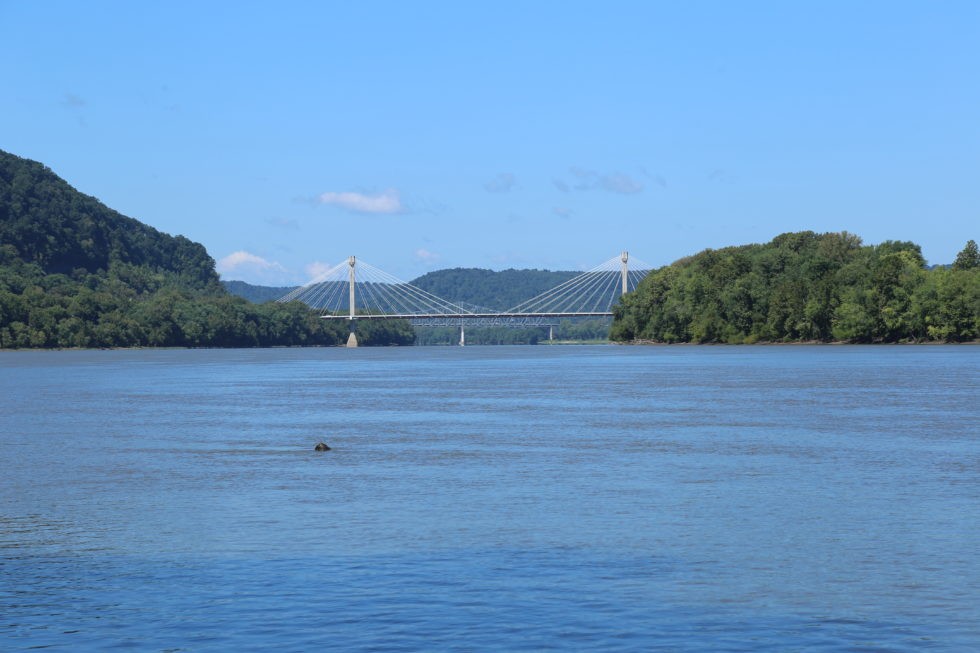
Beginning in 2023, public water systems across the country will begin regularly testing for 29 PFAS chemicals under the Safe Drinking Water Act. The act also directs water systems to notify customers of the PFAS levels in their water.
The EPA is currently considering treating two of the most widely used PFAS chemicals — both of which were found in South Shore’s drinking water — under the same rules covering hazardous waste.
The agency has also invited states and territories to apply for grants to address PFAS chemicals in drinking water, specifically in small and disadvantaged communities.
But Bilott said the regulatory process has dragged on for decades while allowing the pollution to continue.
“Up to now, really, what communities have been forced to do is go into courts,” he said. “And to try to hold folks responsible for this and to try to get clean water, to try to get medical testing, to try to get compensated for the diseases that have been caused.”
Bilott said he’s hopeful the increased attention on forever chemicals will encourage the EPA to swiftly adopt new regulations. But until then, he said, communities have to fend for themselves.
“We still have a system where the burden is placed on the exposed people to have to prove that these things are causing these harms,” Bilott said.
Who's To Blame?
In August, the city of South Shore sued 3M — the only manufacturer of PFOS in the U.S. — DuPont and its subsidiaries in the U.S. District Court of South Carolina for the pollution in South Shore’s drinking water.South Shore’s lawsuit joins around 500 similar cases from local governments suing PFAS manufacturers for contaminating groundwater. Generally, they allege the contamination came from PFAS chemicals used in firefighting foam.
A judicial panel in South Carolina decided to centralize all cases potentially involving firefighting foam contamination because they involved common “questions of law.”
The complaint states the chemical manufacturers designed, manufactured, marketed and sold chemicals they knew were toxic and would be released into the environment. South Shore is seeking to recover the costs associated with removing PFAS pollution, including investigating, treating, filtering and monitoring the city’s water supply, which it pulls from shallow aquifers beside the Ohio River.
New York-based attorney Kevin J. Madonna is also representing South Shore’s case in federal court. He wrote in an email that 3M and DuPont can be held liable for manufacturing a product they knew was toxic and could contaminate drinking water supplies. His law firm, Kennedy & Madonna, represents approximately 90 public entities in PFAS pollution cases across the country.
“We have successfully utilized these legal theories in numerous cases over the past two decades, collecting billions of dollars in damages for our clients,” Madonna wrote.
3M spokesperson Grant Thompson wrote in an emailed statement that the company acted responsibly in manufacturing and selling PFAS products and “will vigorously defend its record of environmental stewardship.”
A spokesperson for DuPont de Nemours, a spinoff of the original company named as a defendant, challenged the suit’s merit, claiming it was “the latest example of DuPont de Nemours being improperly named in litigation” and that the company has never manufactured PFOA or PFOS.
Several South Shore residents interviewed for this story said they hadn’t heard about the city filing the suit, including Smith, who said she used to drink the water before a reporter told her about the town’s issues.
Now, Smith has more questions than answers: Why hasn’t the government regulated a chemical known to be dangerous? Why didn’t the state, city or its water utility officials warn customers like her in the nearly three years they had data on the pollution? And how will South Shore residents benefit directly if the city wins the lawsuit?
“I’ve been paying for this water,” she said. “It's not OK to say, 'Oh, I'm sorry.' If we weren't informed, who is at blame?"
Keep Louisville interesting and support LEO Weekly by subscribing to our newsletter here. In return, you’ll receive news with an edge and the latest on where to eat, drink and hang out in Derby City.
Follow us on Facebook, Twitter and Instagram.


